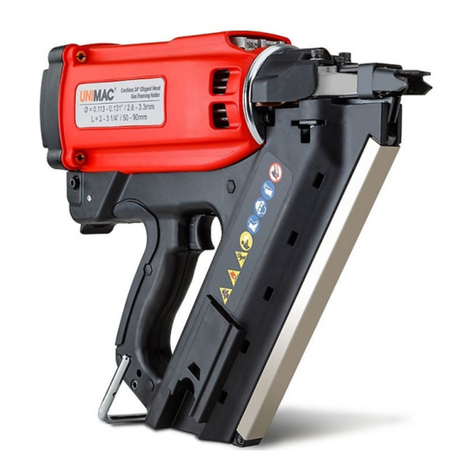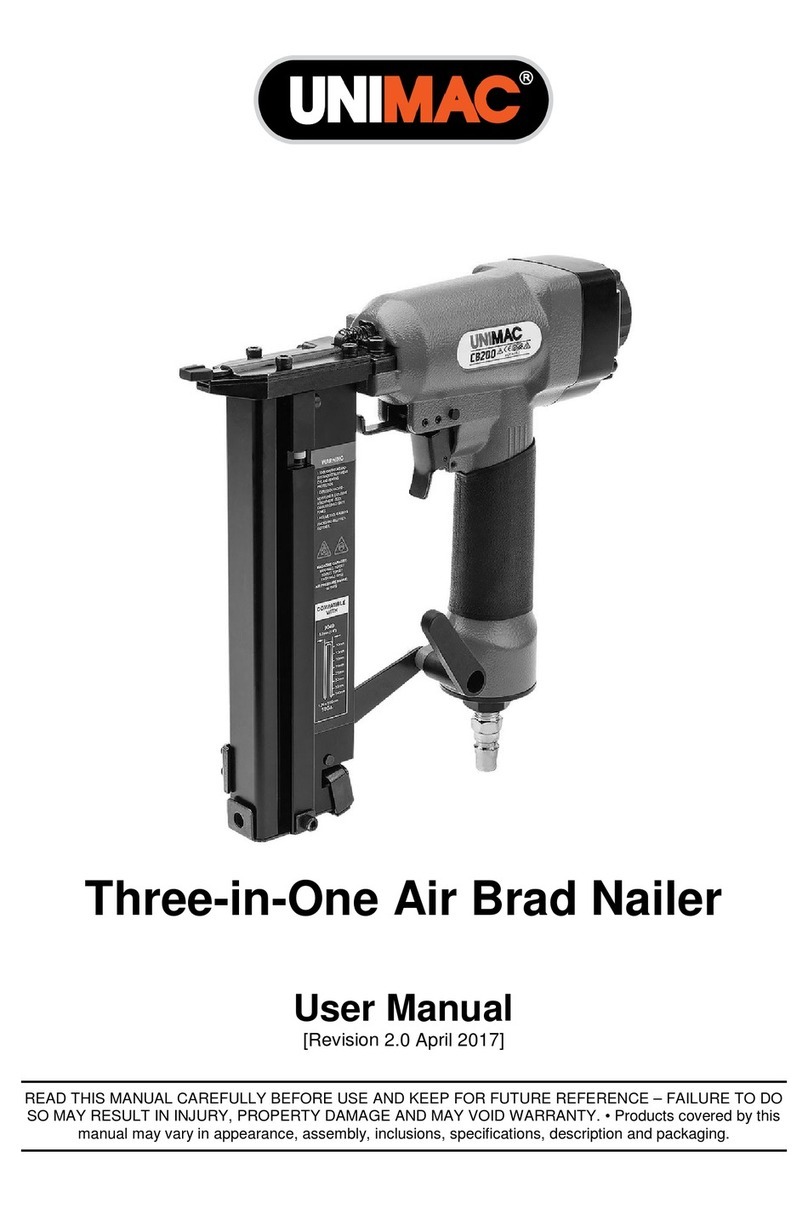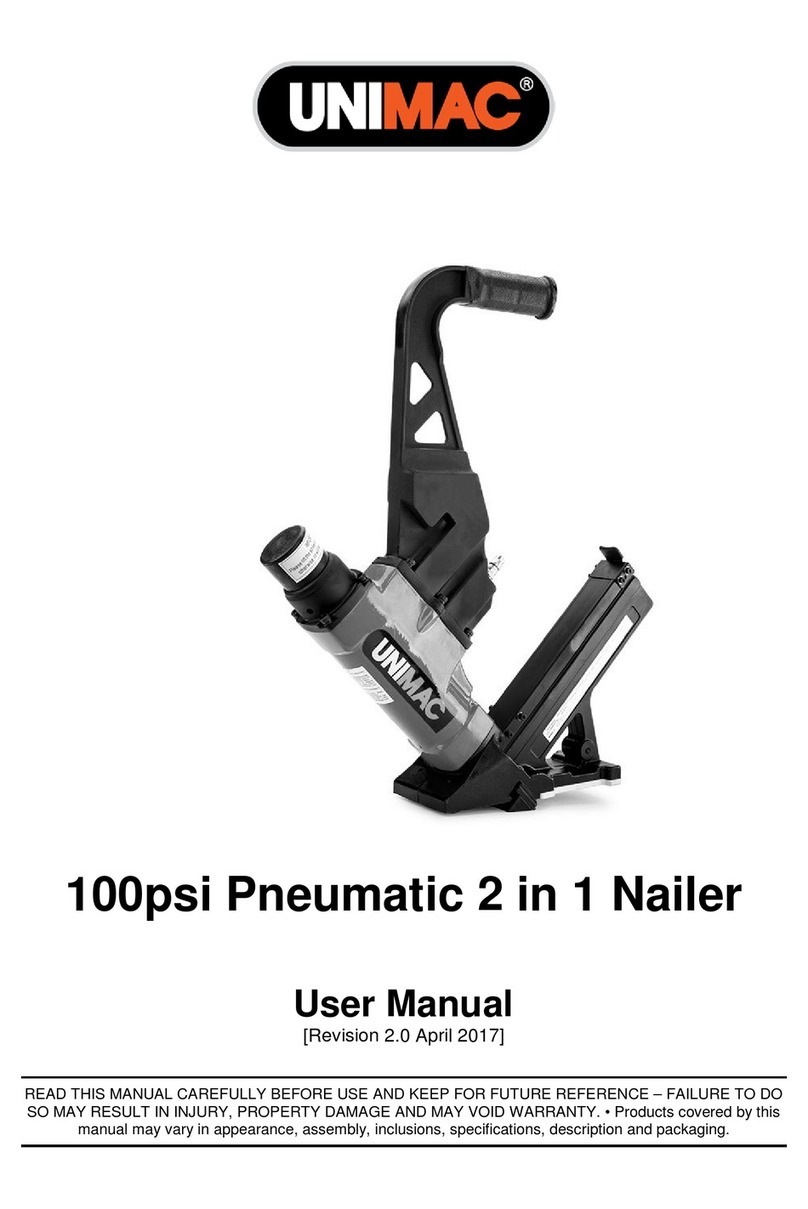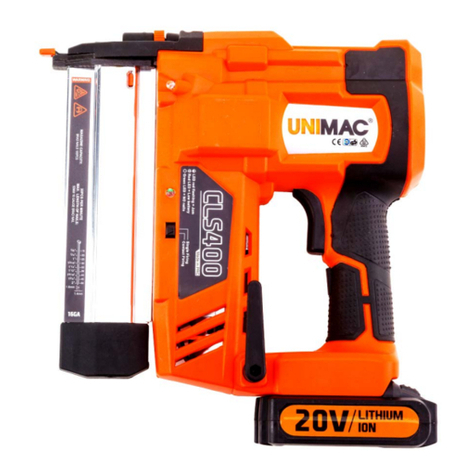
Pneumatic Air Coil Nailer
E&OE ©2017Unimac 2
10. DON'T OPERATE the TOOL NEAR ANY COMBUSTIBLE, or any
other easily-explosive material; don’t operate the tool under
conditions that easily produce corrosions, rusting and
environments with heavy dust in the atmosphere.
11. Disconnect the tool from the air supply hose before
doing any tool maintenance, clearing a jammed fastener, leaving
the work area, moving the tool to another location, or handing the
tool to another person.
12. Disconnect only the quick connector with the body tail
portion of the air inlet, no compressed air can be guaranteed when
disconnecting. If operating the tool is not correct, it can remain
charged with air after being disconnected and still be able to fire a
fastener, causing personal injury.
13. Replace parts and accessories.
Use only the same replacement parts while servicing. Approved
accessories and replacements parts are available.
14. Before using the tool, check carefully if there are any parts
that are damaged to obtain ideal results. Do not use the tool if the
tool has any air leaks, uncompleted, damaged parts or if it needs
to be repaired.
15. Never use the tool if the safety, trigger or spring is inoperable,
missing or damaged. Do not alter or remove the safety, trigger or
springs. Make daily inspections of the free movements of the
trigger and safety mechanism.
16. Use only parts and fasteners that are recommended by the
seller.
17. Connect the tool to an air supply before loading fasteners
to prevent a fastener from being fired during the connection. The
tool-driving mechanism may cycle when the tool is connected to
the air supply. When not in use, remove all of the fasteners from
the nail housing.
18. Always assume that the tool contains fasteners.
Keep the tool pointed away from yourself and others at all times.
Do not fool around with/around the tool. Respect the tool as a
working implement.
19. Do not load fasteners with the trigger or safety depressed to
prevent any unintentional firing of a fastener.
20. Remove your finger from the trigger when not driving
fasteners. Never carry the tool with finger on the trigger; tool will
fire a fastener if the safety is bumped while the trigger is
depressed.
21. Don’t overreach. Keep proper footing and balance at all times
when using or handling the tool.
22. Fire fasteners into work surfaces only: NEVER into
materials that are too hard to penetrate.
23. Grip the tool firmly to maintain control while allowing
the tool to recoil away from the work surface as a fastener is being driven. If the safety bracket is allowed to
contact the work surface again before the trigger is released, an unwanted fastener will be fired.































